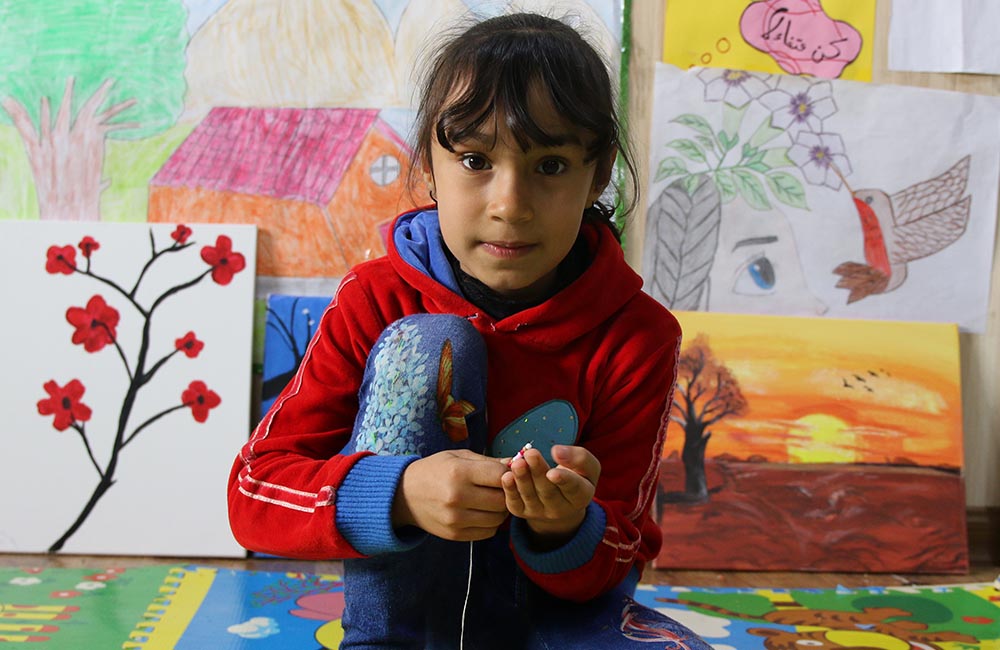“When I see her happy, I think I have everything I need in the world.”
Sometimes a child is too young to articulate grief. But they can learn to express the inexpressible through art.
When ISIS took over Mosul, Iraq in 2004, the fact Fadhil* and his young family made it out of the city alive was a miracle. Finding a safe place to begin again was just the start of a long road to recovery. Particularly for his little children.
Every child is different. And their response to traumatic experiences will vary.
Save the Children’s own research speaks of a ‘toxic stress’ that affects the moods, dreams and fears of children that lived through the horror of the ISIS occupation.
It’s a reality Fadhil knows all too well.
“Before Mosul fell, we were living a happy and comfortable life. We had just bought a house and had moved in. I had a good job and worked for a hospital in the area. Then the war happened, and ISIS took control…”
Fadhil lost everything in the dark rain of airstrikes and bombs. The family walked many hours under a hot sun to escape the attacks – without food or drink, often carrying their exhausted children.
Fleeing a happy home by foot took a lasting toll on Fadhil’s daughter, Aya*. “She was very afraid,” Fadhil says. “She would lose her temper very easily and would tend to avoid others.”
Eventually, they found safety in a camp in Kirkuk. Three families under one roof. Free from the immediate threat, but not from the nightmares.

Aya, now eight, taps into her creative spirit to help recover from her traumatic experience
How handicraft helped Aya
Soon after arriving in the camp, Aya was enrolled in Save the Children’s Child Friendly Space where she began attending the HEART program.
HEART stands for Healing and Education through Arts.
It uses the power of artistic expression – drawing, painting, music, drama, dance and handicraft – to help children process and communicate feelings related to their experiences. The healing process begins when a child shares his or her memories and feelings, either verbally or through their art.
“There is a big difference in my dear Aya,” Fadhil says. “She made new friends, participated in the different sessions and learnt so many new skills like drawing and making handicrafts. She would never share anything with other children earlier but now she confidently shows me and her friends the pieces of art she has created.”
A confidence emerging
Staff working in the HEART program in Kirkuk are witnessing some amazing results.
For many children, the emotional scars are deep and will take time to heal. But the evidence is clear. There is a shift in behaviour patterns. The children are interacting more, participating in activities, coping better and beginning to believe in themselves.
Fadhil too has noticed a new confidence emerging in his daughter.
“I admire the program. Its activities and the positive results it has on the children. The children learn so many things and you can see them improve each day. And Aya is an example.
“Aya is everything to me and I hope she becomes what she would love to be in the future. When I see her happy, I think I have everything I need in the world.”
Images: Kurdo Hasan / Save the Children
*Names have been changed to protect identities